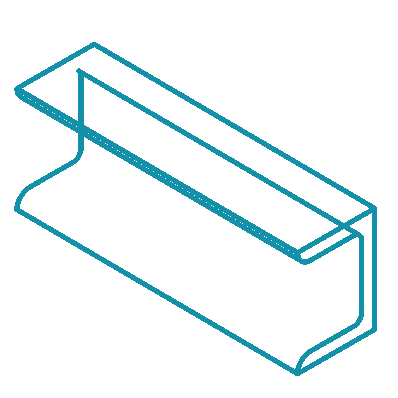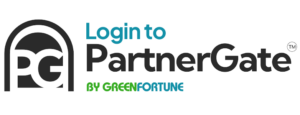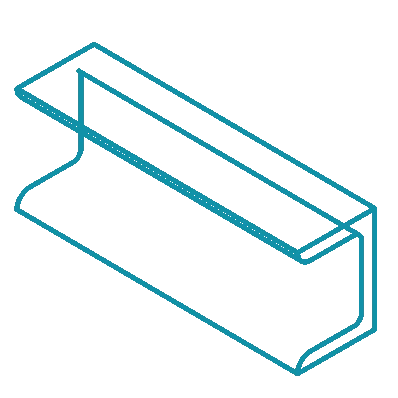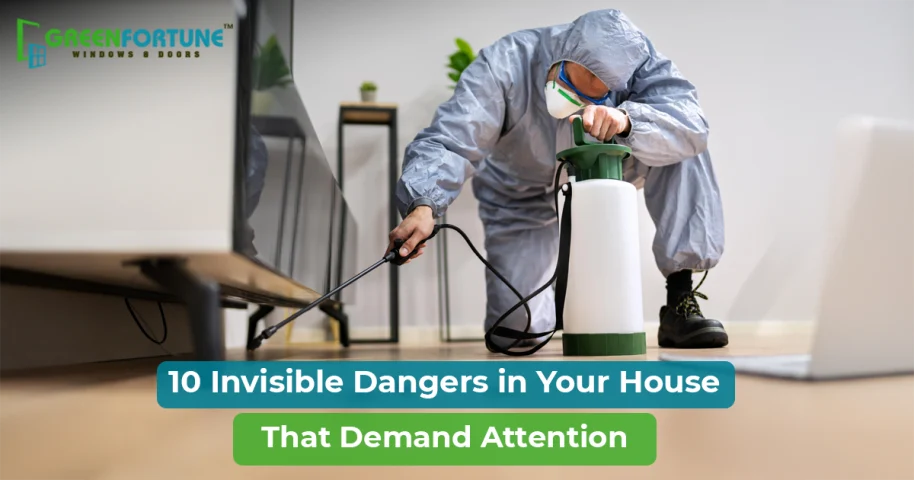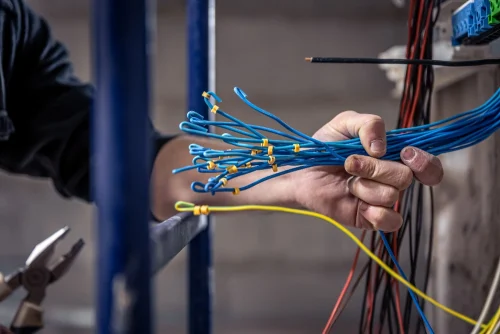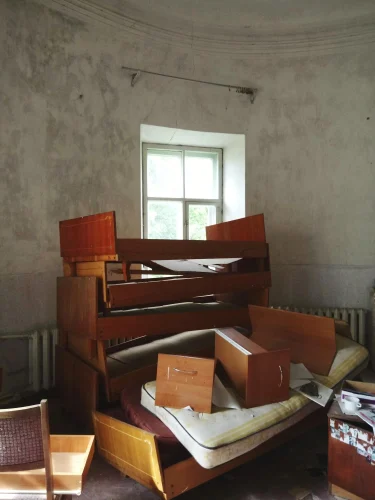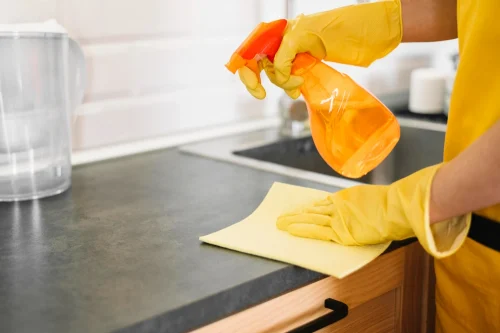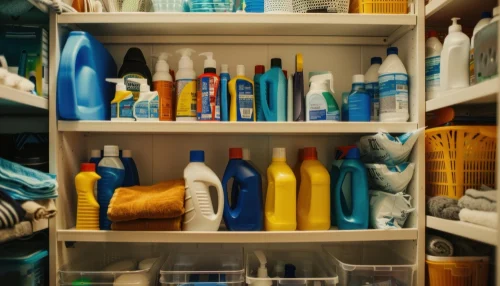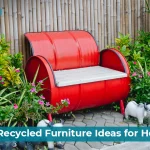
10 Recycled Furniture Ideas For Home That Look Absolutely Brand New
August 14, 2025
Green Building Certification Process in India: A Step-by-Step Guide
August 16, 2025Most of us think of our homes as the safest places in the world. We relax, work, raise our families, and sleep peacefully, trusting that our space protects us. But what if the real danger is not outside, but inside? Every year, countless accidents occur because of hidden hazards in your home - the ones you don't notice until something goes wrong.
From faulty wiring and gas leaks to mold and loose furniture, many Indian households are filled with silent threats. The good news? You don't need a significant renovation or expensive gadgets to stay safe. Here are the most common home safety hazards, risks to avoid, and a helpful home inspection checklist.
Table of contents
- 1. Faulty Wiring
- 2. Gas Leaks and Poor Ventilation
- 3. Mold and Dampness
- 4. Slips, Trips, and Falls
- 5. Fire Hazards
- 6. Pests and Rodents
- 7. Unstable Furniture and Fixtures
- 8. Water Quality and Kitchen Hygiene
- 9. Poor Lighting and Electrical Overload
- 10. Unsafe Storage of Cleaning Supplies and Medicines
- Conclusion
- GreenFortune - Your Premium Solution for uPVC Windows and Doors
1. Faulty Wiring
Old or poorly installed electrical systems are one of the most dangerous hidden dangers in your home. You might not see sparks or smell burning wires, but electrical faults are a leading cause of house fires in India.
What to Watch For:
- Frequent circuit breaker trips
- Flickering or buzzing lights
- Warm or discolored switchboards
Prevention Tips:
- Hire a certified electrician to inspect your system every few years
- Replace old wires and install surge protectors
- Never overload power strips or plug multiple appliances into a single outlet
Electrical safety should be high on your home inspection checklist Indian standard.
2. Gas Leaks and Poor Ventilation
Gas leaks are not always dramatic. A small leak from your stove, pipeline, or cylinder can build up over time, leading to significant health problems or even explosions. When combined with poor ventilation, standard in Indian kitchens and bathrooms, it becomes one of the worst home safety hazards.
Risk Indicators:
- A faint gas smell near the stove or cylinder
- A blue flame turning yellow
- Frequent headaches or dizziness indoors
Household Risks to Avoid:
- Ignoring regular gas regulator checks
- Using outdated gas pipes
- Keeping kitchens or bathrooms shut without exhaust systems
Always ensure cross-ventilation in gas-using areas and keep a fire extinguisher nearby.
3. Mold and Dampness
In many Indian cities, especially those with humid climates or poor drainage systems, mold is one of the most common hidden dangers in your home. It grows silently on damp walls, ceilings, and under furniture, affecting both your house and your health.
Health Effects Include:
- Breathing difficulties
- Sinus infections
- Skin allergies
What to Do:
- Fix all leaks and seepage issues quickly
- Clean bathroom tiles and corners with anti-fungal solutions
- Avoid drying clothes indoors when possible
Include a regular wall and ceiling moisture check in your home inspection checklist in India.
Read more - Right Window Standard
4. Slips, Trips, and Falls
It might seem like a minor issue, but slips and falls account for a large number of household injuries, especially for children and the elderly. Wet floors, loose tiles, or even cluttered walkways are dangerous household risks to avoid.
Danger Zones:
- Bathroom and kitchen floors
- Stairs without railings
- Mats and rugs without anti-slip pads
Quick Fixes:
- Use rubber mats in bathrooms
- Keep staircases well-lit and free from objects
- Repair loose tiles or flooring immediately
Childproof sharp corners and install handrails if you live with elderly family members.
5. Fire Hazards
Fire-related home safety hazards are not limited to cooking gas. Electrical appliances, unattended candles, incense sticks, and overcharged mobile devices can all spark accidental fires.
Common Fire Risks:
- Burning incense near curtains
- Charging phones overnight under pillows
- Keeping flammable items near gas or heat
Fire Prevention Essentials:
- Install smoke detectors in key areas like the kitchen
- Keep a basic fire extinguisher at home
- Educate every family member about fire safety
These small steps can go a long way in protecting your home from major fire accidents.
6. Pests and Rodents
Cockroaches, mosquitoes, rats, and termites are not just unpleasant - they're dangerous. These pests spread infections, damage property, and can even trigger allergies or asthma.
Warning Signs:
- Chewed wiring or wooden furniture
- Mosquitoes breed in stagnant water
- Foul smells and droppings in corners
Protective Measures:
- Schedule quarterly pest control
- Keep food covered and garbage bins sealed
- Remove stagnant water and seal all wall cracks
This is a significant section of household risks to avoid, especially during the rainy season.
7. Unstable Furniture and Fixtures
Wobbly chairs, top-heavy cupboards, and unmounted televisions may not seem threatening until they fall. Children pulling on furniture or pets knocking over shelves can cause severe injuries.
High-Risk Items:
- Tall wardrobes not fixed to the walls
- TVs placed on shaky stands
- Storage shelves overloaded with heavy objects
How to Fix It:
- Anchor large furniture to the wall
- Use corner guards on sharp furniture edges
- Organize heavy items on lower shelves
It's a simple but often overlooked part of your home inspection checklist in the India guide.
8. Water Quality and Kitchen Hygiene
India still faces challenges with clean drinking water. Dirty or poorly filtered water can lead to major illnesses like jaundice, typhoid, and diarrhea. Your kitchen, if not maintained properly, can become a breeding ground for bacteria.
What to Watch:
- Outdated or unclean water purifiers
- Raw meat and vegetables stored together
- Reusing dirty kitchen towels or sponges
Safety Tips:
- Clean your water purifier filter every two months
- Wash fruits and vegetables thoroughly
- Keep kitchen counters dry and sanitized
Good kitchen hygiene is one of the easiest ways to eliminate hidden dangers in your home.
Read more: 10 Must-Haves for Stylish Homes
9. Poor Lighting and Electrical Overload
Inadequate lighting and excessive dependence on extension cords or multi-plug adapters can turn everyday tasks into safety hazards. Dim staircases, unlit balconies, or hallways increase the risk of tripping, especially for children and elderly people. Meanwhile, plugging too many devices into a single outlet can lead to overheating and fires.
Home Safety Hazards to Note:
- Low lighting in common walking areas
- Excessive use of multi-plug extensions
- Lack of backup lighting during power cuts
What to Do:
- Install LED lights in hallways and stairwells
- Avoid plugging high-power devices into a single socket
- Include lighting checks in your home inspection checklist India format
10. Unsafe Storage of Cleaning Supplies and Medicines
It’s common to store cleaning products, insect sprays, or medicines in lower cabinets or kitchen shelves. Still, without safety locks or proper labels, this becomes one of the major household risks to avoid, especially in homes with children.
Key Risks:
- Keeping harmful liquids within reach of kids
- Storing medicines without expiry checks
- Mixing products like bleach and acid that release toxic gases
How to Prevent Accidents:
- Store all chemicals in locked, labeled cabinets
- Check medicine dates regularly and dispose of expired ones safely
- Never mix cleaning products unless instructions clearly say so
This simple habit can prevent poisoning, allergic reactions, and even chemical burns.
Conclusion
You don't need to panic, but you do need to pay attention. The hidden dangers in your home don't always announce themselves. A safer home isn't built in a day - it's maintained every day, with care, attention, and timely fixes.
GreenFortune - Your Premium Solution for uPVC Windows and Doors
GreenFortune is your go-to partner for high-quality uPVC windows and doors designed with energy efficiency in mind. They offer lasting durability, comfort, and modern aesthetics to bring style into any home.
Choose GreenFortune today for innovative design and unmatched customer service. Get in touch with us now.
FAQs
- What are the most common hidden dangers in your home?
Common threats include electrical faults, gas leaks, mold, unstable furniture, pest infestations, and poor water quality.
- How do I create a home inspection checklist for India?
Your checklist should include checks for wiring, gas connections, damp walls, pest signs, water purifier filters, ventilation, and furniture stability.
- How often should I inspect my home for safety hazards?
Ideally, a full home inspection should be performed every six months. Electrical and gas checks should be performed annually, and pest control can be performed quarterly.
hidden dangers in your home you must know


